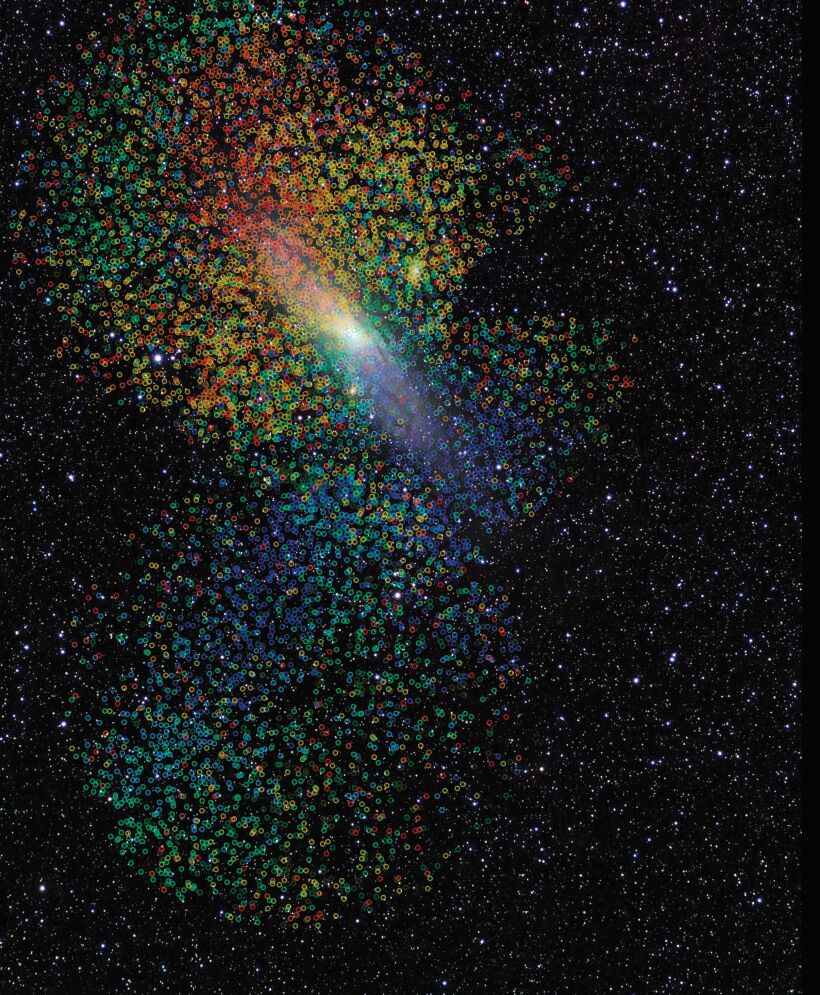Galactic immigration history
DOI: 10.1063/PT.3.5205
Because of Earth’s position in one of the Milky Way’s minor spiral arms, it is difficult to see other portions of the galaxy. We can’t easily observe immigration events of groups of stars, for example, which would provide a record of galactic mergers and other cosmic history. The Milky Way’s nearest neighbor is the Andromeda galaxy. Its proximity to Earth provides telescopes with a relatively unobscured view. To learn more about the immigration history of stars in the Andromeda galaxy, Arjun Dey of NSF’s NOIRLab in Tucson, Arizona, and colleagues analyzed the spectra of some 11 400 stars collected by the Dark Energy Spectroscopic Instrument on the Nicholas U. Mayall 4-Meter Telescope at Kitt Peak National Observatory.

Superposed on this optical image of the sky are the motions of the individual stars in Andromeda. The color coding ranges from red, which indicates those moving away from us, to blue, for those moving toward us, relative to the galaxy. A detailed analysis of the stellar motions outside Andromeda’s bright central disk reveals dynamical evidence for an immigration event 1 billion to 2 billion years ago. The new data triple the number of stars with measured spectra outside of Andromeda’s central disk. They suggest that most of the galaxy’s inner halo, which stretches around the disk and across most of the roughly 5.5° by 6.7° field of view, formed from a single merger event. Given the similarity between Andromeda and the Milky Way, the results may reveal what the Milky Way looked like several billion years ago. (A. Dey et al., Astrophys. J. 944, 1, 2023, doi:10.3847/1538-4357/aca5f8
More about the Authors
Alex Lopatka. alopatka@aip.org

